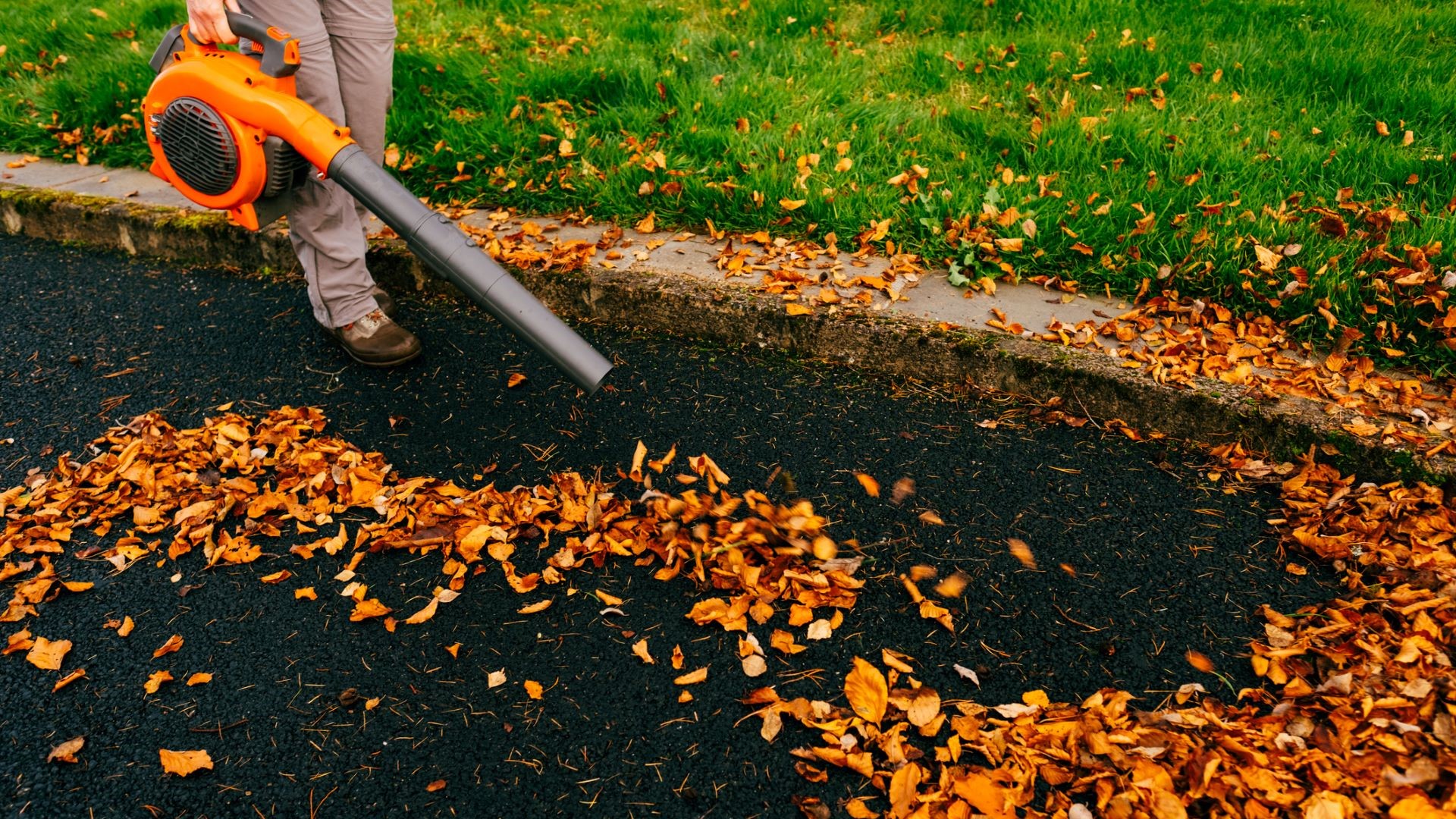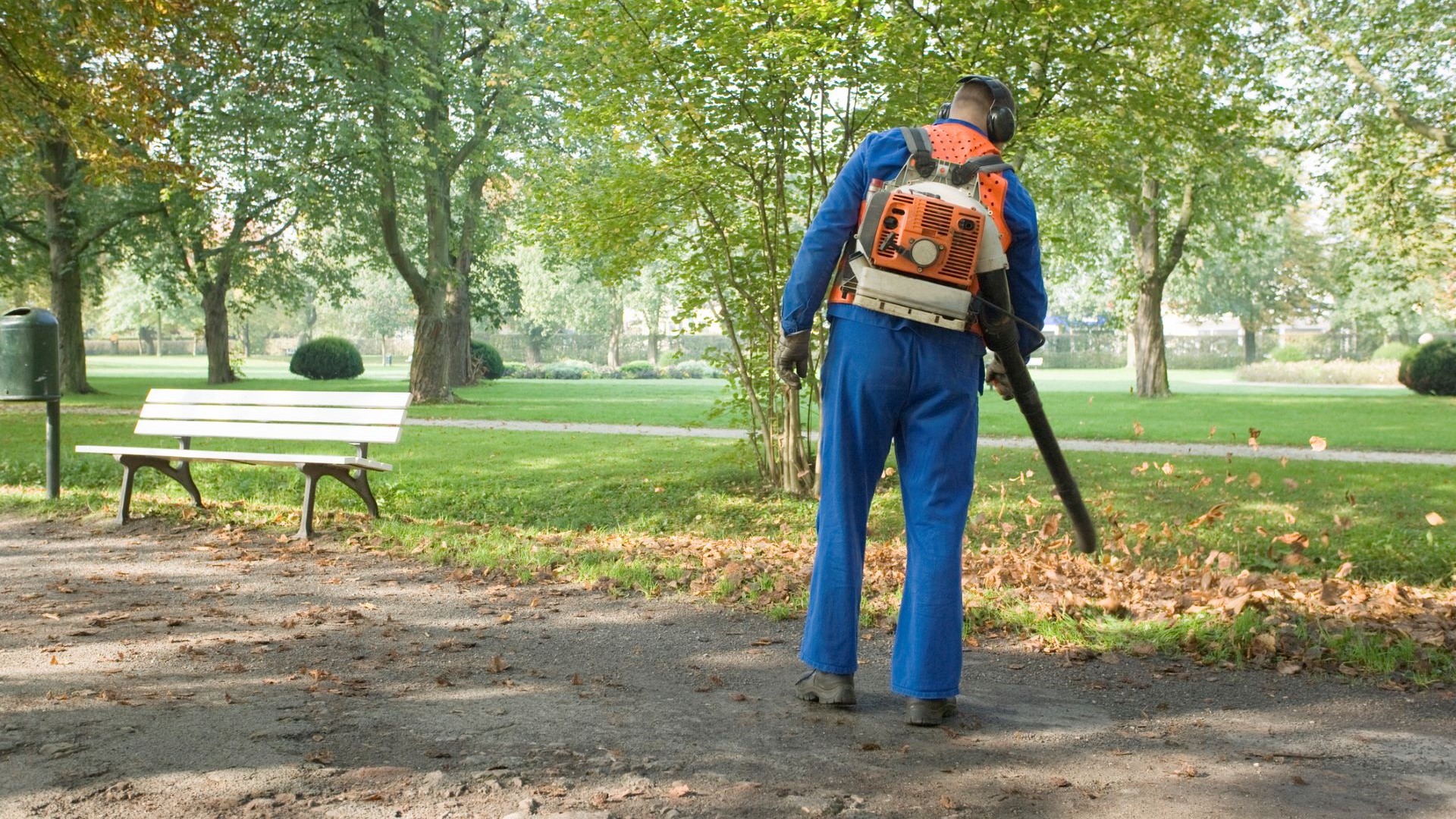How to choose a leaf blower
Everything you need to know to clear your yard

If you find your backyard covered in fallen leaves every fall, you may be wondering how to choose a leaf blower to make endless raking and sweeping a thing of the past.
Leaf blowers are a fast and easy way to clean your yard in a fraction of the time it takes to sweep up manually. They are designed to dispose of fallen leaves, twigs, grass clippings, sand and debris, and some can even tackle light and fluffy snow.
We’ve got 6 top tips for choosing the best leaf blower for your backyard, from handheld leaf blowers to backpacks and wheeled walk-behinds. Plus, we’ll help you determine whether you need a gas or electric leaf blower and guide you on what extra features you might want to look for.
How to choose a leaf blower
1. Gas or electric?
Before deciding which to go for, it’s worth checking out what your local area permits. Many towns, cities, and states in the U.S., including California, Vermont, and Washington D.C., have banned gas-powered lawnmowers and leafblowers outright in a bid to cut down on pollution and noise. Check your local area’s regulations beforehand.
There are lots of advantages to choosing an electric leaf blower. Corded or battery-powered electric versions are getting better all the time, and many can now offer a performance similar to gas leaf blowers. They’re also much quieter than gas-powered units and give off no emissions, so your neighbors and the environment will thank you. Corded leaf blowers tend to be lighter because they don’t have a battery, so they can be a better choice if you tire easily or have mobility issues.
Gas-powered units are the behemoths of leaf blowers and are designed for large swathes of land with plenty of fallen leaves. However, they can be noisy and polluting. They will also need regular servicing, and you’ll need to factor in the cost of buying fuel and figure out where you’ll store yours when it isn’t in use.
Gas-powered leaf blowers come as two-cycle or four-cycle engines. Two-cycle engines provide a nice compromise between power and weight. However, they operate on an oil-gasoline mixture, requiring you to blend the fuel yourself or buy pre-mixed fuel.
Sign up to receive the latest news, reviews, buying guides and deals direct to your inbox
Four-cycle engines only need plain gasoline as their fuel source. So they free you from mixing oil and gas. But four-cycle engines come with extra heft compared to two-cycles. They also demand regular oil changes.

2. How big is your backyard?
This is fundamental to choosing the right kind of leaf blower. If you have a large backyard of around an acre or more, with plenty of fallen leaves and debris, your best bet is to opt for a gas-powered leaf blower, ideally one you wheel along and walk behind. These leaf blowers are ideal for large gardens and yards because they’re the least physically demanding of all leaf blowers, and you don’t have to worry about the cord getting in the way or stretching the entire length of your garden. You also don’t have to rely on a battery, which could run out halfway through your job. These are bulky machines, though, so you’ll need somewhere to store it when it’s not in use.
If you have a medium-sized yard, a backpack leaf blower, whether electric cordless or gas-powered, can be an ideal choice. However, we’d advise you to check the battery life of any electric leaf blower before you buy. Most batteries have a maximum life of around 30 minutes before you need to charge them, but some can give you much less time, as little as 8 minutes in some cases. If you have a lot of leaves in the fall, you may prefer to go for a walk-behind leaf blower or a cordless unit with a couple of batteries that you can have on hand to swap out mid-task.
For owners of small yards, it’s best to opt for a lightweight leaf blower, and you have the option of corded or battery-powered as well as handheld or backpack design. The advantage of hand-held units is that they’re designed to be used one-handed. They’re light, easy to maneuvre and usually very affordable. If you opt for a corded version, just make sure the cord stretches from your socket to the limit of your yard, and consider any obstacles or trees that may limit mobility.
3. What kind of power do you want?
Consider the unit's CFM (cubic feet per minute) ratings. Higher CFM generally means more powerful airflow and the ability to move wet, heavy leaves more effectively. Professional models may have air speeds over 600 CFM, but you can get away with anything over 400 CFM for a large plot of land. You can look for a unit with around 200 CFM if you have a small to medium-sized yard.

4. What kind of weight can you handle?
Leaf blowers must be lightweight enough to carry and use comfortably for extended periods. More power usually means more weight, so try to find a balance based on your size and strength and what you’ll need your leaf blower to do. Look for an appropriate balance based on your needs and upper-body strength. Models around 10 to 15 pounds are ideal for one-handed use.
5. What else can I use my leaf blower for besides leaf blowing?
“Leaf blowers can also be used for blowing other types of garden debris, such as sand and grass clippings,” says Martin Stewart, power tool expert at Ryobi UK & Ireland. “You can also use them to blow debris created using power tools during a DIY project. A rarer use case is blowing freshly fallen snow off your car to ensure it’s safe to drive on the road.”
Can you use a leaf blower for snow? For regions where snow can be a bit heavier, a leaf blower can be a way to save money rather than buying two tools, but you'll have to be sure your leaf blower is right for the job.
Another type of leaf blower is a blower/vacuum. Stewart explains that these models usually have the same features as a leaf blower but can also vacuum leaves and pop them in a collection bag. “Some models also incorporate a mulching blade, which chops the leaves and debris into smaller chunks,” says Stewart. “These are ideal for adding mulch to your compost heap or around your flower beds to introduce natural nutrients back into the soil.”

Martin Stewart is the National Trainer for Ryobi UK & Ireland. He has worked at Ryobi for over 10 years and has a passion for promoting the benefits and safe use of cordless power tools.
6. Check out the nozzle
Leaf blowers with a wider nozzle are best for moving leaves around, while those with a narrow nozzle are better suited to first and debris. Ideally, find a leaf blower that offers a couple of different types of nozzles as attachments.
7. Read the reviews and check the warranty
“Before purchasing a leaf blower, I’d recommend you read lots of reviews about the brand you've settled on,” says Nadya Yaneva, a gardening and plant expert at Fantastic Gardeners.
"Reviews can give you a valuable insight into the model’s performance, durability and overall customer satisfaction. And check what kind of warranty the manufacturer offers and what it covers. A longer warranty period can give you peace of mind about how durable your leaf blower will likely be.”

Nadya is a gardening and plant expert for Fantastic Gardeners - a UK-based company of experts helping people with house maintenance matters.

Joanne Lewsley is a reputable freelance writer specializing in evidence-based health and lifestyle content. With a background in journalism and extensive experience working for known brands, Joanne rigorously tests and evaluates home gadgets. Her passion for writing is complemented by her love for the outdoors and live music.
